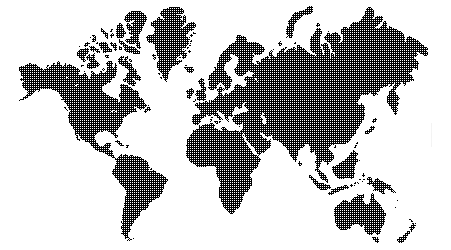
Traveling Outside the US
Here are three of the most popular strategies you can use to minimize phone related costs and maximize your connectivity while traveling.
-
Buy a phone in the US that’s compatible with foreign cell systems and sign up for an “international” plan.The cell phone market is dominated by two competing technologies. The most popular is known as GSM (aka Global System for Mobile Communications or Group Spécial Mobile). It’s used around the world and controls about 80% of the market. The other leading technology is known as CDMA (aka Code Division Multiple Access). CDMA systems are widely used in the US, Canada and Mexico but are rarely used elsewhere. That’s why GSM phones are your best choice if you plan to use your Smartphone when traveling outside the US. Keep in mind however that most CDMA based phone companies offer dual-mode CDMA/GSM handsets to their customers who travel internationally.In the US, Verizon, Sprint and their respective subsidiaries use CDMA technology. AT&T / Cingular and T-Mobile use GSM technology. GSM phones transmit on 4 different frequency bands (850MHz, 900MHz, 1800MHz and 1900MHz). Of these, only the 850MHz and 1900MHz bands are used in the US. The rest of the world uses the 900MHz and 1800MHz bands. If you want a GSM phone that works around the world, select what’s known as a Tri-Band (900MHz, 1800MHz and 1900MHz) or Quad-Band (850 MHz, 900MHz, 1800MHz and 1900MHz) phone.Accessing data networks around the world is a bit trickier than connecting to voice networks. There are several different 3G and 4G technologies in use, and although they were all derived from GSM or CDMA technology, they are not necessarily compatible with one another or your Smartphone. Care must be taken to insure that your Smartphone is compatible with the foreign data network you’re hoping to use. The best place to get accurate and up-to-date compatibility advice is through your current provider. Be sure to find out the amount of data you can download without incurring additional fees. Downloads add up quite quickly so you’ve got to be very vigilant as you check your email, surf the web or use web based apps.
- Buy an “unlocked” phone. Unlocked phones are so named because they’re not tied to a specific phone company. You can jump networks by simply swapping out SIM cards. Such flexibility comes at a price. Unlocked phones are usually more expensive than phones with bundled service plans because their price isn’t subsidized by a long term contract. Unlocked phones can be bought anywhere in the world. If you buy one in the US, make sure it’s compatible with the phone system of the country you’ll be traveling to. When you arrive at your foreign destination, buy a low cost, prepaid voice and data plan and insert the accompanying SIM card into your phone. It’s important to remember that you’ll incur roaming charges if you place calls to the US using your foreign SIM card. When you arrive back home in the US, swap out the foreign SIM card for one that you purchase here in the US.
- Leave your US Smartphone at home (especially if it isn’t compatible with the cell system of the country you’re visiting) and buy a foreign phone with a cheap service plan when you arrive at your destination. You’ll probably save a great deal of money if you also include a data plan with the bundle. Data costs can add up quickly and you can always buy additional time or bandwidth as you need it. Be aware that you’ll incur roaming charges if you call the US with the foreign phone.
